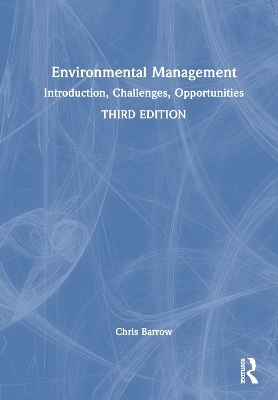
Environmental Management
Routledge (Verlag)
978-1-032-02371-7 (ISBN)
This comprehensively updated third edition explores the nature and role of environmental management and offers an introduction to this rapidly expanding and changing field. It focuses on challenges and opportunities, and core concepts including sustainable development.
The book is divided into five parts:
Part I (Introduction to Environmental Management): four introductory chapters cover the justification for environmental management, its theory, scope, goals and scientific background
Part II (Practice): explores environmental management in economics, law and business and environmental management’s relation with environmentalism, international agreements and monitoring
Part III (Global Challenges and Opportunities): examines resources, challenges and opportunities, both natural and human-caused or human-aggravated
Part IV (Responses to Global Challenges and Opportunities): explores mitigation, vulnerability, resilience, adaptation and how technology, social change and politics affect responses to challenges
Part V (The Future): the final chapter considers the way ahead for environmental management in the future.
With its well-structured coverage, effective illustrations and foundation for further, more-focused interest, this book is easily accessible to all.
It is an essential reference for undergraduates and postgraduates studying environmental management and sustainability, and an important resource for many students on courses including environmental science, environmental studies and human geography.
Chris Barrow is Founding Editor of the journal Land Degradation & Development and continues to work on it. His research and publications focus on environmental management, land degradation, water and agriculture, tropical highland environments and smallholders. He has undertaken research in Malaysia, the sub-Antarctic, highland Morocco and Amazonian Brazil (floodlands). He lectured at Hull University (1975–77), joined Swansea University as a Lecturer in 1978, and retired from a Readership in late-2011. He worked as a palaeoecologist with the British Antarctic Survey (1972–75), gained a PhD from Birmingham University (1977) and a PGCE in 1978.
Part I: Introduction to Environmental Management, 1. Introduction, 2. Environmental Management: Character and Goals, 3. Environmental Management and Science, 4. Environmental Management Background, Part II: Practice, 5. Environmental Management, Business and Law, 6. Participants in Environmental Management, 7. Environmental Management Approaches, 8. Data, Standards, Indicators, Benchmarks, Goal Setting and Objectives, Monitoring, Surveillance, Models and Auditing, 9. Proactive Assessment, Prediction and Forecasting, Part III: Global Challenges and Opportunities, 10. Resources: Character, Opportunities and Challenges, 11. Population Increase, Global Warming, Pollution, Biodiversity Loss and Diseases, 12. Human and Natural Causes, Part IV: Responses to Global Challenges and Opportunities, 13. Mitigation, Vulnerability, Resilience and Adaptation, 14. Technology and Social Developments, Part V: The Future, 15. The Way Ahead, Bibliography
| Erscheinungsdatum | 21.04.2024 |
|---|---|
| Zusatzinfo | 1 Tables, color; 2 Tables, black and white; 7 Line drawings, color; 6 Line drawings, black and white; 17 Halftones, color; 4 Halftones, black and white; 24 Illustrations, color; 10 Illustrations, black and white |
| Verlagsort | London |
| Sprache | englisch |
| Maße | 174 x 246 mm |
| Gewicht | 1020 g |
| Themenwelt | Naturwissenschaften ► Biologie ► Ökologie / Naturschutz |
| Technik ► Umwelttechnik / Biotechnologie | |
| Weitere Fachgebiete ► Land- / Forstwirtschaft / Fischerei | |
| ISBN-10 | 1-032-02371-6 / 1032023716 |
| ISBN-13 | 978-1-032-02371-7 / 9781032023717 |
| Zustand | Neuware |
| Informationen gemäß Produktsicherheitsverordnung (GPSR) | |
| Haben Sie eine Frage zum Produkt? |
aus dem Bereich


